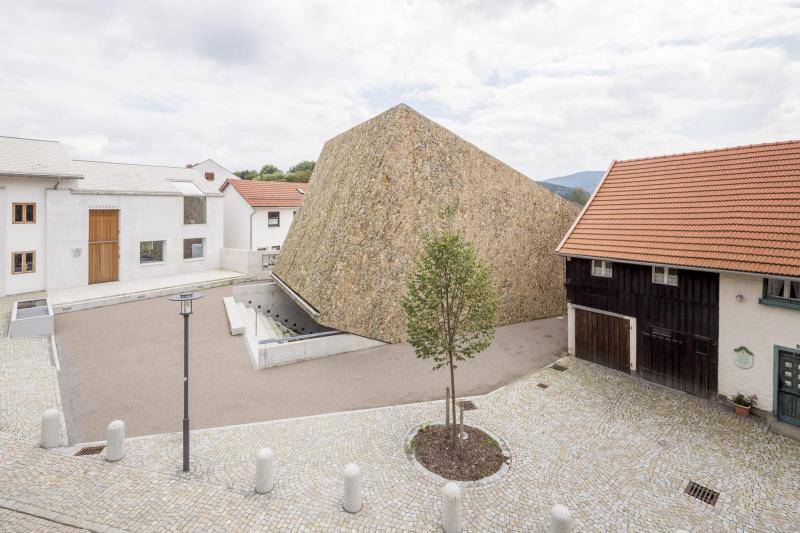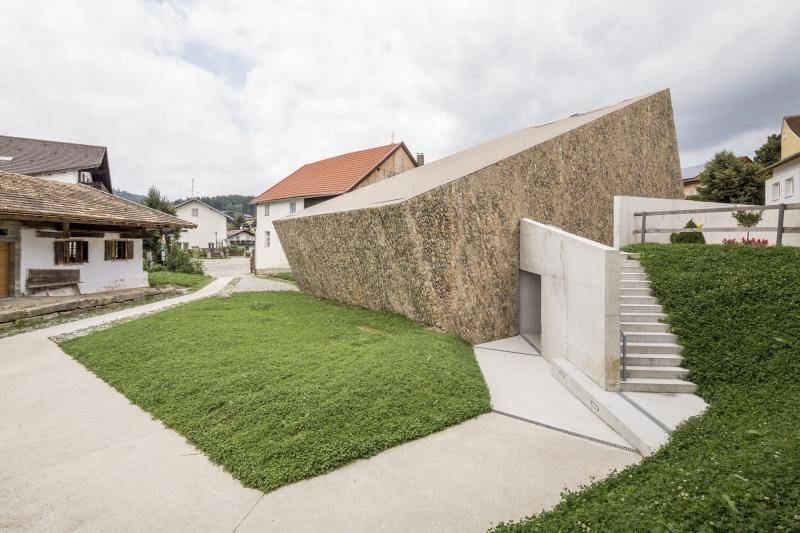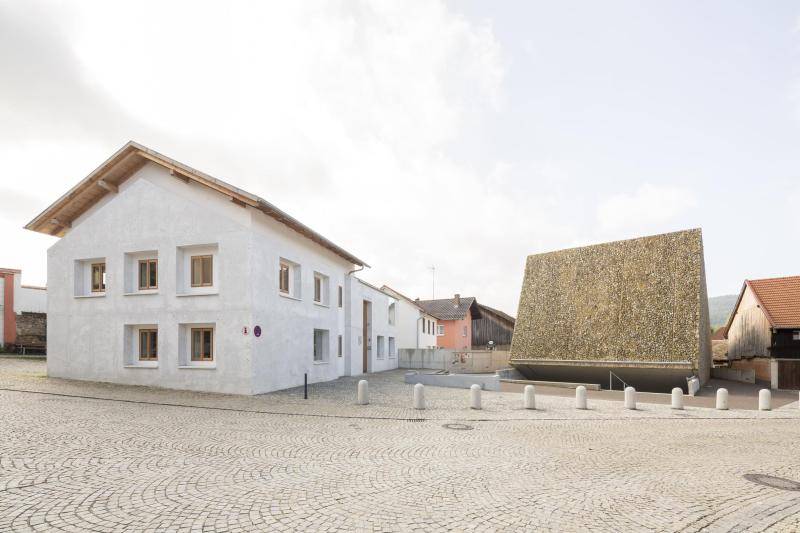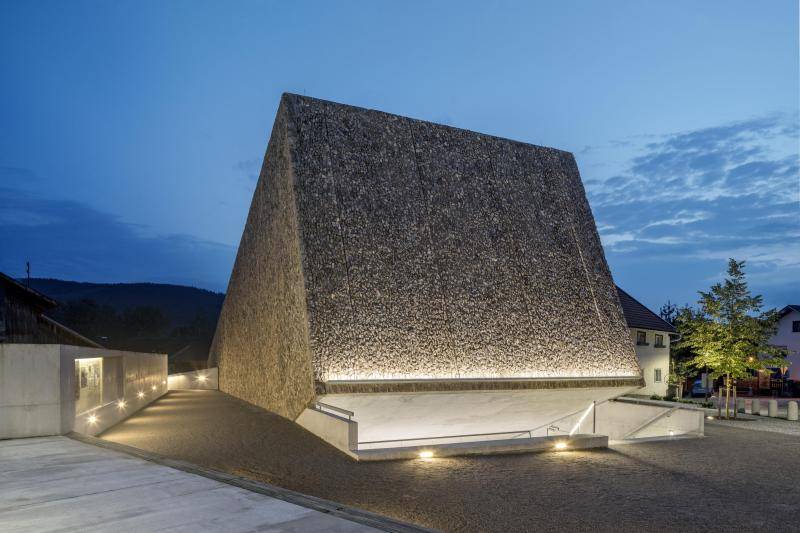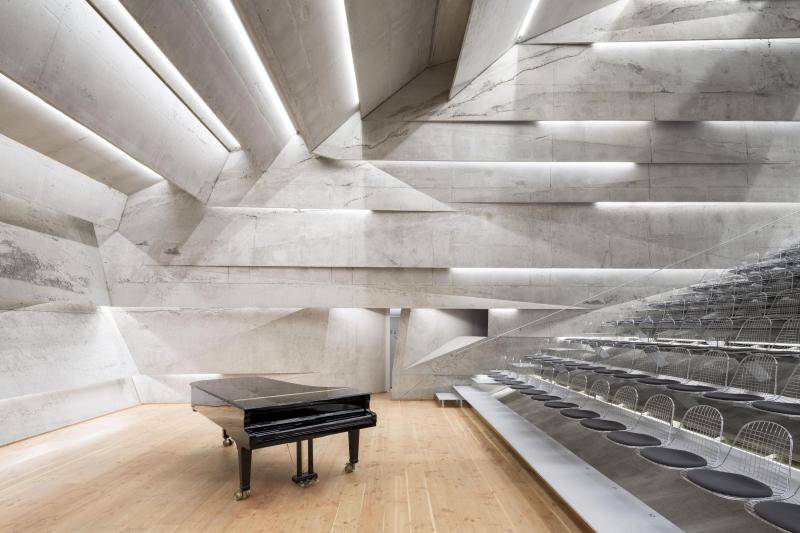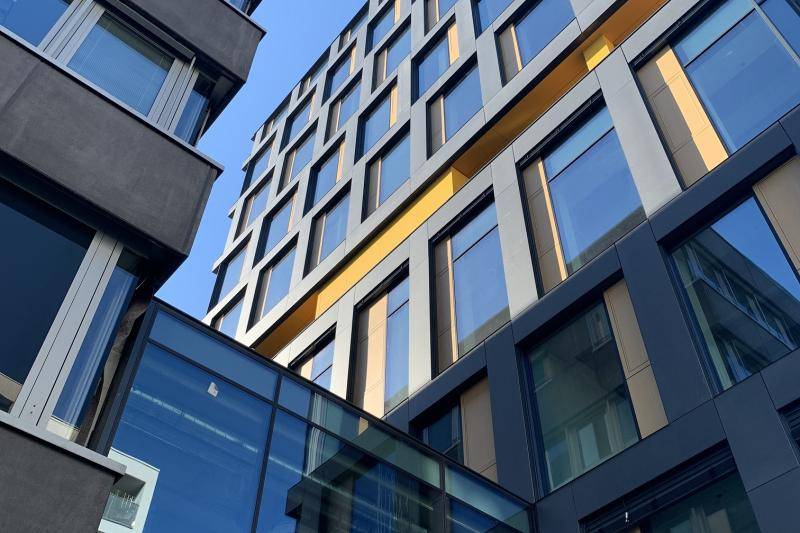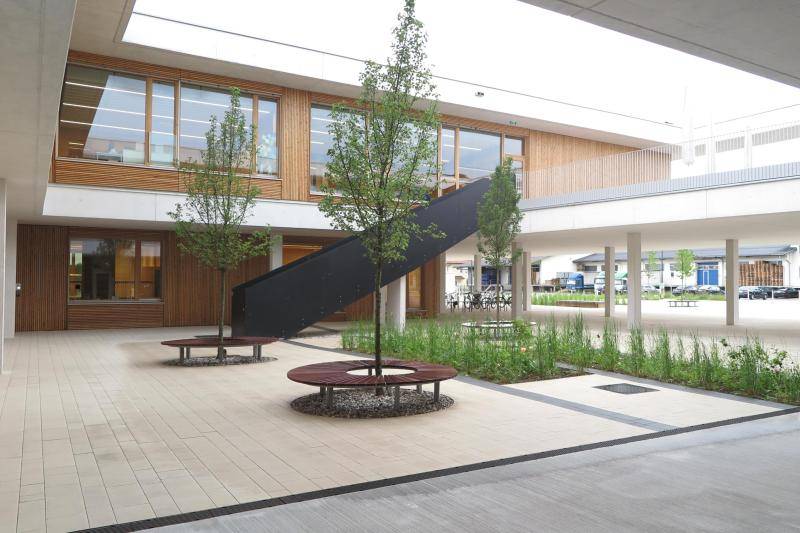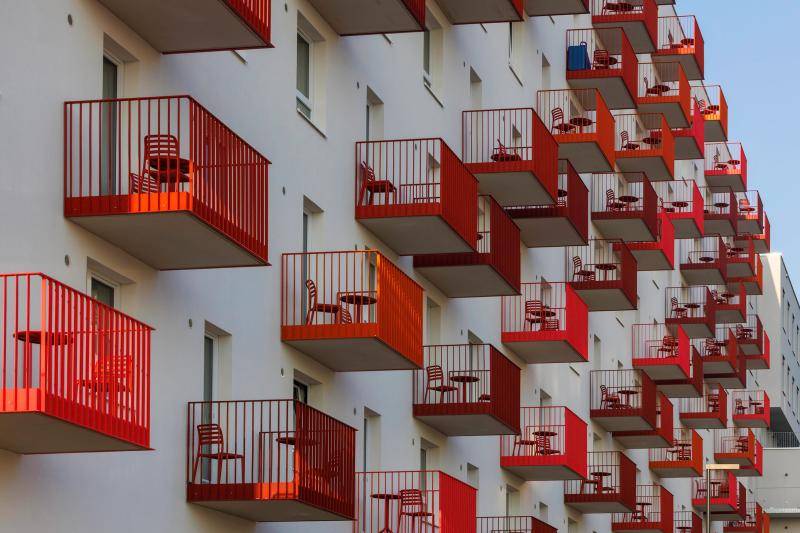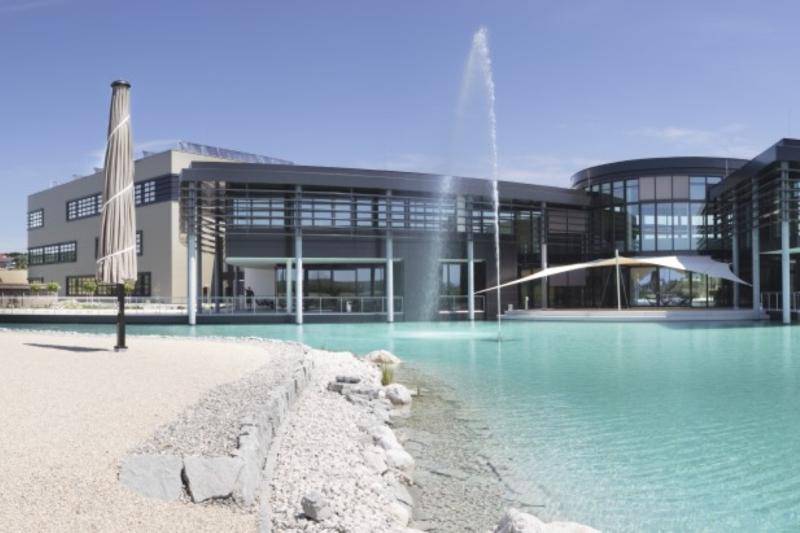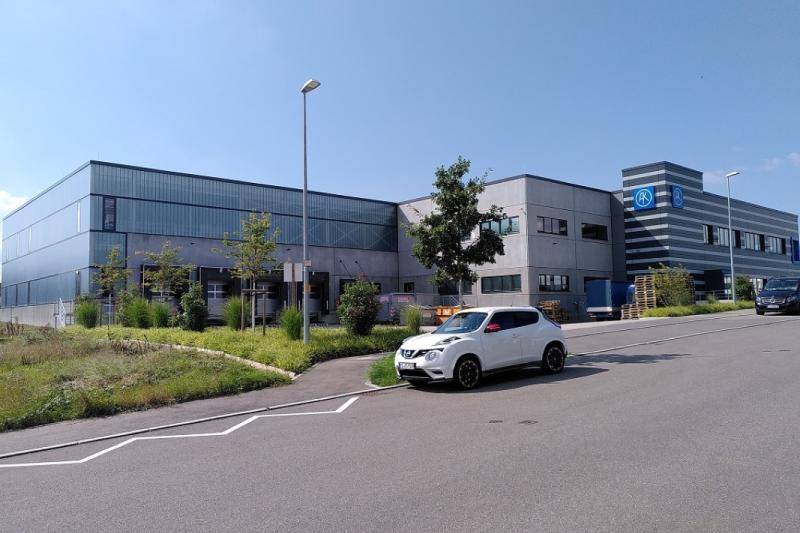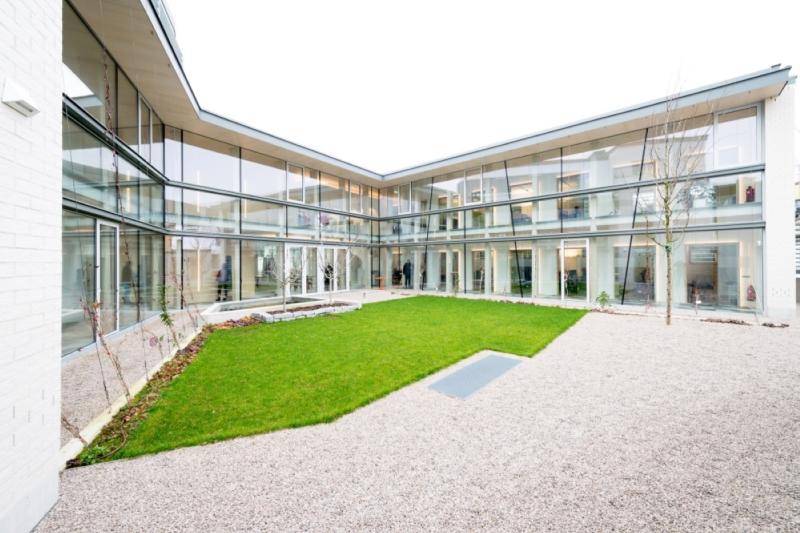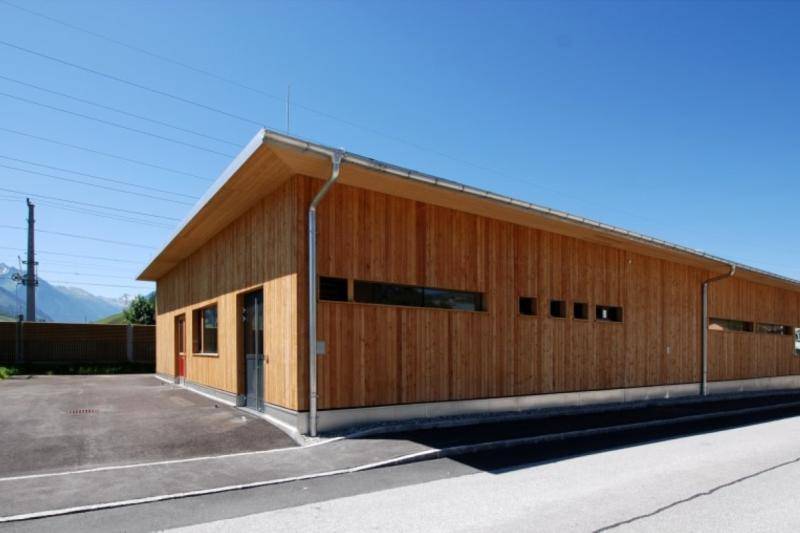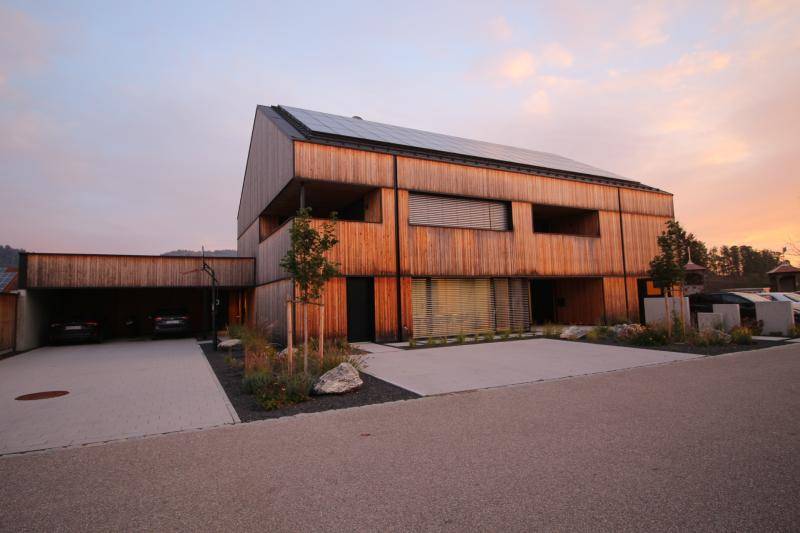Concert House Blaibach
A solitaire made of concrete, in the middle of the village square of Blaibach - an architectural highlight and at the same time the centerpiece of the urban development measure with which the village center of Blaibach is being revitalized.
Community Blaibach
2014
Structural engineering: A.K.A. Ingenieure
Installations: Cirtec Michael Hopf
Electrical planning: Planungsbüro Stefan Schmid
Acoustic planning: Müller-BBM
Architekturpreis Beton
Deutscher Architekturpreis
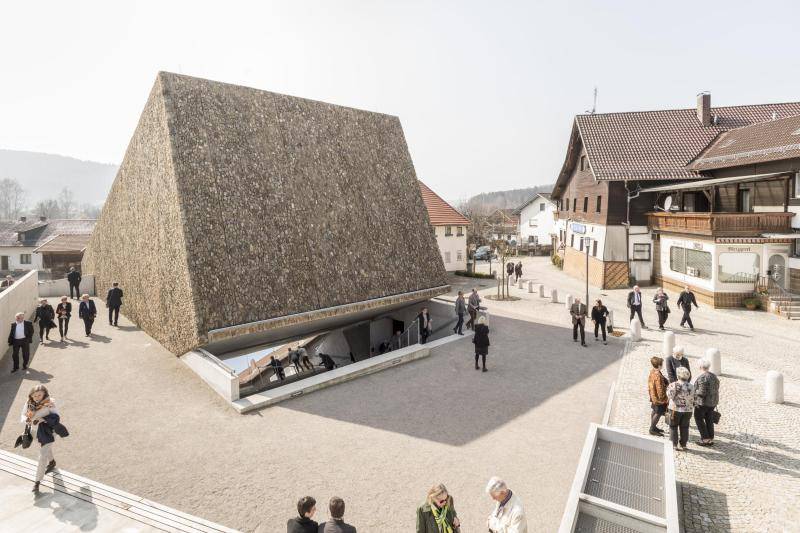
The concert hall was placed right next to the new community center and thus now completes the new village square, a construction project realized with urban development funding. The concert hall is a solitaire made of concrete, which, with its inclination over the edge of the slope in the center of the village, is oriented to the topography and, with its granite facade, ties in with the stonemasonry tradition of Blaibach. The monolithic, tilted structure opens up to concertgoers on the new village square and from there leads them down a staircase into the foyer, which lies below ground level. This not only provides access to the functional rooms such as the checkroom, the sanitary facilities and the bar area, but also leads around the auditorium into the interior of the concert hall. This unfolds its acoustics within the light-looking concrete structure, whose precise light slits illuminate the space. The structure of the concert hall is made of in-situ concrete, whose difficult shape could only be realized by means of an extremely elaborately constructed formwork. The dominant tilted surfaces of the concert hall were constructed in this way for acoustic reasons; behind their slits, they contain LED lights as well as bass absorbers that provide optimal acoustics. The concrete inside the concert hall is untreated. The surfaces serve to absorb the mid-high tones. The slope of the structure - caused by the incline of the slope - supports the audience stand, whose transparent-looking chairs seem to float above light slits.
The facade consists of slabs with rough-hewn granite stones set in a concrete bed. The concert hall itself is made of cast-in-place concrete, an insulating concrete with glass foam ballast that helps avoid complicated layering and details susceptible to damage. With a grain size of 0/16 and a compressive strength class of LC 8/9, this concrete is probably the first to be used in the world. The insulating concrete, with aggregate made from recycled glass sourced locally, has particularly good insulating properties and a low dead weight. From a wall thickness of 40 centimeters, no additional insulation layers are required in a building of this use. Thomas Beck, A.K.A. Ingenieure, explains the ingenious system: "Due to the high cement content, the concrete produces an unusually high amount of thermal energy during hydration, which could only be dissipated slowly to the environment because of the good insulating properties and the relatively large component thicknesses here. Thus, a temperature sensor embedded in concrete measured over 90 degrees Celsius inside a test wall. This had to be taken into account in the material quality of the electrical conduits and the spacers of the reinforcement. In addition, it was necessary to run the component activation during the hydration phase."
(Text: Gisela Gary; Z+B magazine; in shortened form)
